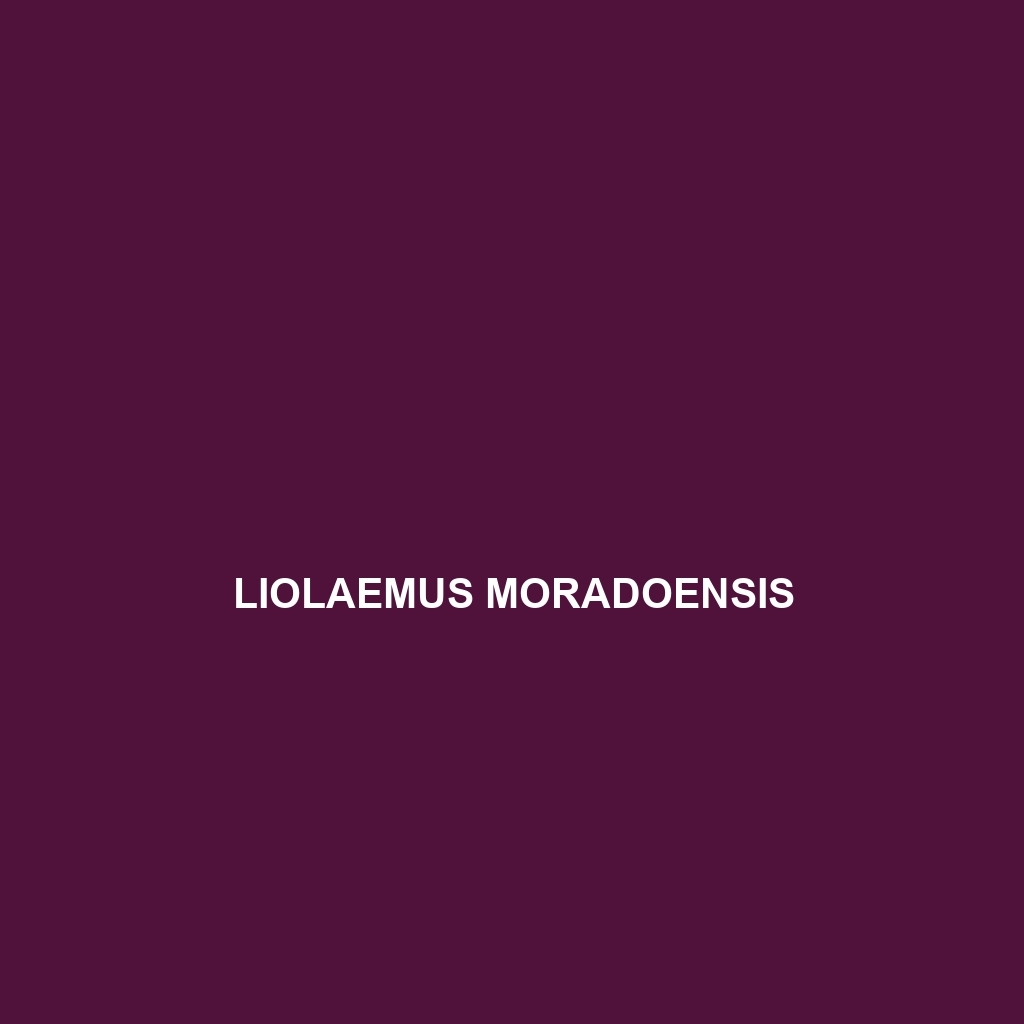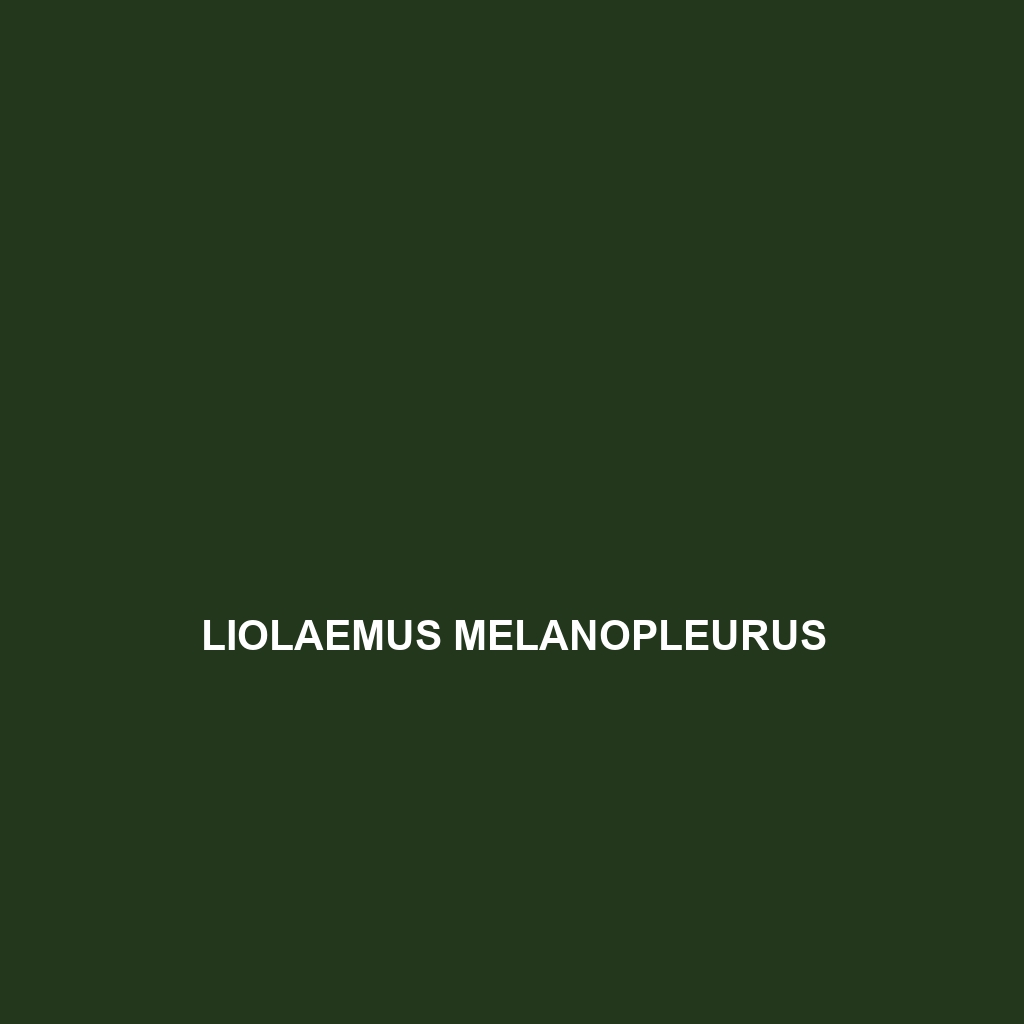Discover the fascinating Liolaemus moradoensis, a medium-sized lizard native to the temperate forests and mountainous regions of central Chile, known for its distinctive light brown coloration with darker spots and its impressive climbing abilities. This omnivorous species plays a vital role in its ecosystem by regulating insect populations and contributing to soil health, while also facing vulnerabilities due to habitat loss and climate change.
Tag: camouflage in reptiles
Liolaemus melanopleurus
<b>Liolaemus melanopleurus</b>, also known as the black-backed lizard, is a 10 to 15 cm insectivorous species native to the temperate forests and grasslands of Patagonia, characterized by its dark gray to black dorsal coloration, agility in rocky terrains, and important role in controlling insect populations within its ecosystem. This resilient lizard exhibits fascinating behavioral traits, including territorial displays and thermoregulation through sun basking.
Liolaemus etheridgei
Discover the Liolaemus etheridgei, a medium-sized lizard native to the temperate forests of Argentina and Chile, known for its distinctive brown and grey coloration that provides excellent camouflage in rocky terrains. This insectivorous species exhibits unique social behaviors, including territorial displays and elaborate mating rituals, and plays a vital role in controlling insect populations within its ecosystem.
Liolaemus eleodori
Liolaemus eleodori is a striking lizard species native to the temperate forests of Chile and Argentina, measuring 15 to 20 centimeters with vibrant coloration and intricate patterns. Thriving in wet, biodiverse habitats, these insectivores exhibit unique behaviors, including diurnal foraging and thermoregulation, while playing a vital role in their ecosystem.
Liolaemus brizuelai
Discover the fascinating Liolaemus brizuelai, a vibrant lizard native to the temperate forests of western Argentina, exhibiting striking green and brown coloration for camouflage, an insectivorous diet, and unique courtship displays. This vulnerable species plays a crucial role in its ecosystem, contributing to the balance of local biodiversity.
Liolaemus boulengeri
<b>Liolaemus boulengeri</b> is a fascinating lizard native to the temperate forests of southern South America, known for its unique coloration, territorial behavior, and insectivorous diet. This species plays a crucial role in its ecosystem by controlling insect populations and serving as prey for various predators.
Lialis jicari
Discover the fascinating <b>Jicarian legless lizard (<i>Lialis jicari</i>)</b>, a slender, limb-free reptile native to Australia's savannas and temperate forests, known for its excellent camouflage, nocturnal and diurnal behaviors, and diet of insects. This species plays a crucial role in its ecosystem by controlling insect populations and offering insights into biodiversity.
Lerista separanda
Lerista separanda, commonly known as the ornate skink, is a diurnal, insectivorous species native to the eastern and southeastern regions of Australia, characterized by its elongated, laterally compressed body and striking coloration of brown, black, and cream stripes. This adaptable skink thrives in various habitats, utilizing burrowing behavior for shelter and thermoregulation, and plays a critical role in controlling local insect populations.
Lerista rolfei
Discover the Lerista rolfei, an elongated, slim-bodied skink found in Australia's temperate forests and arid scrublands, known for its camouflaging earthy tones and nocturnal burrowing behavior. This insectivorous species plays a vital role in its ecosystem by controlling invertebrate populations and enhancing soil health.
Lerista parameles
<p><b>Lerista parameles</b>, a fascinating insectivorous lizard found in Australia's temperate forests and savannas, features a smooth, elongated body with excellent camouflage and thrives in sandy, well-drained soils. Known for its secretive, nocturnal behavior and minimal social interactions, this species plays a crucial role in controlling insect populations while adapting well to its diverse habitat.</p>








